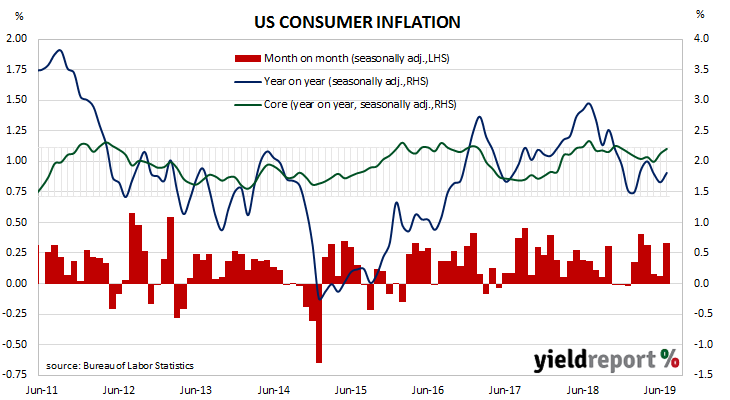The annual rate of US consumer inflation halved from nearly 3% in the period from July 2018 to February 2019 and then subsequently fluctuated in a range from 1.5% to 2.0%. However, “headline” inflation is known to be volatile and so reference is often made to “core” inflation figures. This measure has mostly ranged between 1.7% and 2.3% in recent years and it has not been below 2.0% since early 2018. Some economists have recently begun to ask whether it is starting to rise further.
The latest consumer price index (CPI) figures released by the Bureau of Labor Statistics indicated seasonally-adjusted consumer prices increased on average by 0.3% in July, in line with the consensus figure but more than June’s 0.1% increase. On a 12-month basis, the inflation rate quickened from June’s revised annual rate of 1.6% to 1.8%.
NAB economist Tapas Strickland said tariff increases were playing a part, although not yet a major one. “Driving the read was some flow-through from the tariffs that were increased in May…though the dominant factors were higher [prices for] used cars, medical services and airline fares.”
Core inflation, a measure of inflation which strips out the volatile food and energy components of the index, increased on a seasonally-adjusted basis by +0.3% for the month, higher than the 0.2% which had been expected but the same-sized increase as in June. As a result, the annual rate ticked up to 2.2%, an increase on June’s comparable figure of 2.1%.

